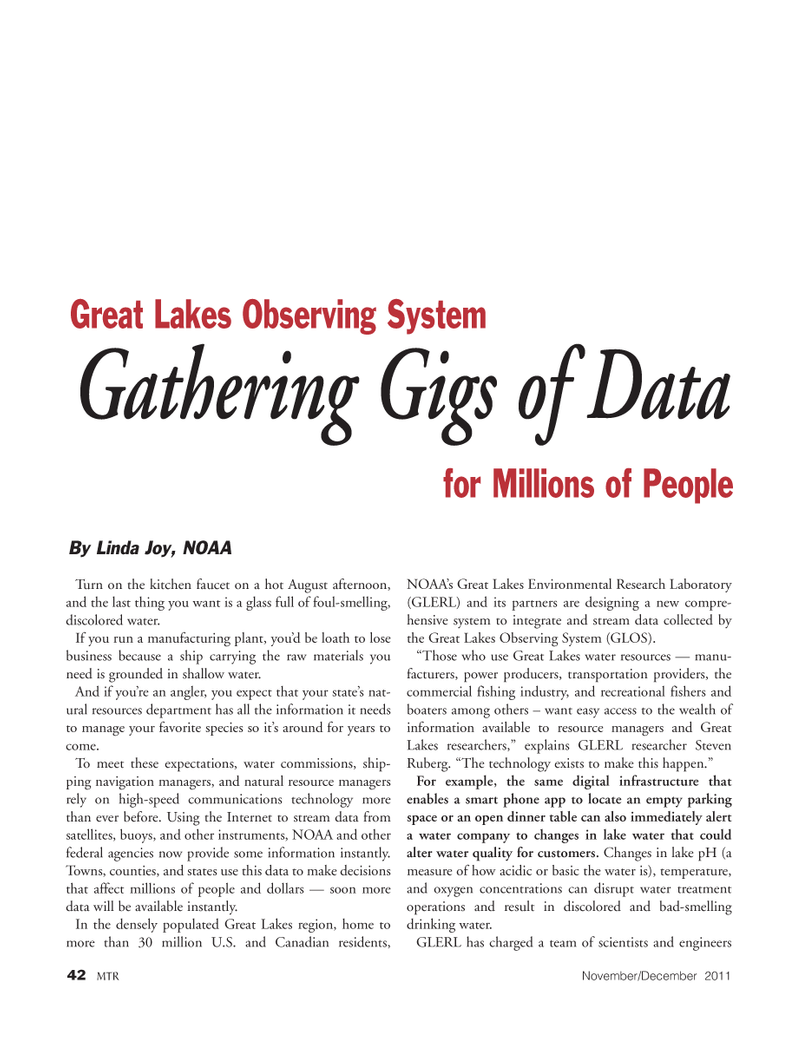
Page 42: of Marine Technology Magazine (November 2011)
FreshWater Monitoring and Sensors
Read this page in Pdf, Flash or Html5 edition of November 2011 Marine Technology Magazine
42MTRNovember/December 2011Great Lakes Observing System Gathering Gigs of Data for Millions of PeopleBy Linda Joy, NOAATurn on the kitchen faucet on a hot August afternoon, and the last thing you want is a glass full of foul-smelling, discolored water. If you run a manufacturing plant, you?d be loath to lose business because a ship carrying the raw materials you need is grounded in shallow water. And if you?re an angler, you expect that your state?s nat- ural resources department has all the information it needs to manage your favorite species so it?s around for years to come.To meet these expectations, water commissions, ship- ping navigation managers, and natural resource managers rely on high-speed communications technology more than ever before. Using the Internet to stream data from satellites, buoys, and other instruments, NOAA and other federal agencies now provide some information instantly. Towns, counties, and states use this data to make decisions that affect millions of people and dollars ? soon more data will be available instantly. In the densely populated Great Lakes region, home to more than 30 million U.S. and Canadian residents, NOAA?s Great Lakes Environmental Research Laboratory (GLERL) and its partners are designing a new compre- hensive system to integrate and stream data collected by the Great Lakes Observing System (GLOS). ?Those who use Great Lakes water resources ? manu- facturers, power producers, transportation providers, the commercial fishing industry, and recreational fishers and boaters among others ? want easy access to the wealth of information available to resource managers and Great Lakes researchers,? explains GLERL researcher Steven Ruberg. ?The technology exists to make this happen.? For example, the same digital infrastructure that enables a smart phone app to locate an empty parking space or an open dinner table can also immediately alert a water company to changes in lake water that couldalter water quality for customers. Changes in lake pH (ameasure of how acidic or basic the water is), temperature, and oxygen concentrations can disrupt water treatment operations and result in discolored and bad-smelling drinking water. GLERL has charged a team of scientists and engineersMTR#9 (34-49):MTR Layouts 11/29/2011 9:42 AM Page 42

 41
41

 43
43
